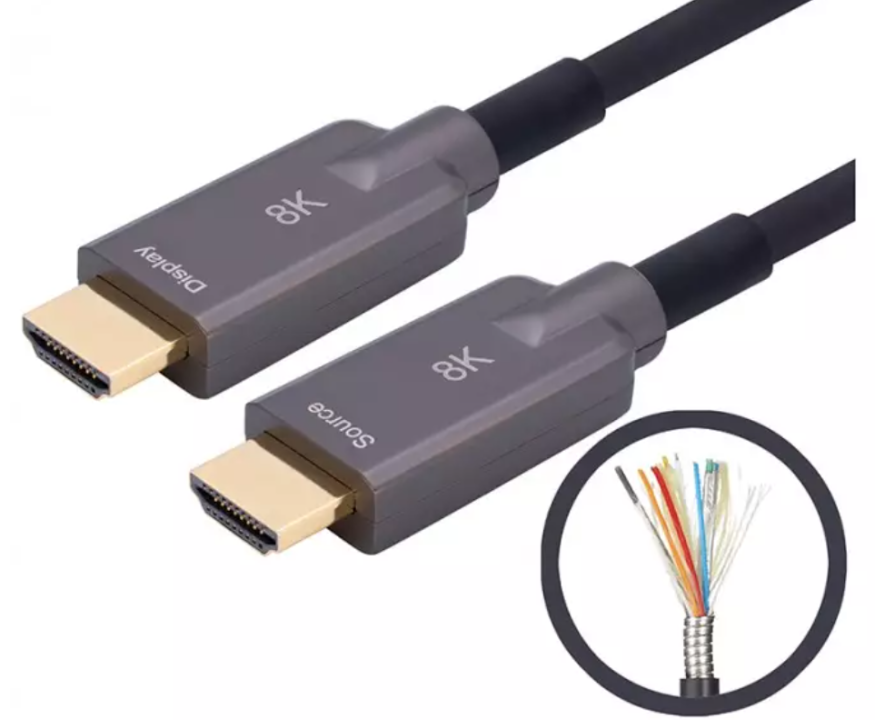Table Of Content
Table Of Content
In today’s audiovisual connectivity world, end-users expect faster data transmission, crystal-clear video quality, and future-proof infrastructure — all while keeping installation time and costs under control. This is where hybrid cable technology is transforming the way integrators approach professional AV systems, broadcast setups, and enterprise networks.
What Are Hybrid Cables?
Hybrid cables combine optical fiber and copper conductors in a single jacket. This design delivers the high-bandwidth, low-latency transmission of fiber with the power delivery and control signals that copper excels at — all in one streamlined solution.
Popular formats include:
• HDMI 2.1 Active Optical Cables (AOC) – for 8K video transmission over long distances without signal loss.
• DisplayPort 1.4 AOC – ideal for high-refresh-rate, high-resolution displays in control rooms and simulation environments.
• USB-C AOC & USB AOC – supporting data, video, and power delivery for modern conference systems and workstations.
Why the AV Industry is Moving Toward Hybrid Solutions
1. Simplified Installation – Running one cable instead of multiple reduces conduit space, labor hours, and points of failure.
2. Uncompromised Performance – OM3 or OM4 optical fiber cores ensure high-speed, high-resolution signal delivery, while copper conductors handle auxiliary power and control signals.
3. Future-Readiness – With standards like 8K, HDR, 120Hz, and beyond becoming the norm, hybrid cables protect investments against rapid tech changes.
4. Durability for Demanding Environments – Options like Kevlar reinforcement and armored sheathing extend cable life in high-traffic or outdoor applications.
Emerging Trends in Optical Fiber & AV Connectivity
• 8K/120Hz Adoption – Driving demand for HDMI 2.1 hybrid solutions.
• USB4 & Thunderbolt 4 Integration – Boosting the need for USB-C AOC with 40Gbps transmission capability.
• AV-over-IP Expansion – Hybrid cables enable low-latency, high-bandwidth network backbones for IP-based AV systems.
• Sustainable Installations – Fewer materials, less waste, and longer lifecycles align with green building standards.
The Bottom Line
Hybrid cables are not just a convenience — they are a strategic upgrade for integrators who want to simplify deployments, minimize risk, and maximize performance. Whether you’re building a conference room, broadcast studio, or digital signage network, investing in next-generation hybrid cabling ensures you stay ahead in a fast-evolving market.
#AudiovisualConnectivity #OpticalFiber #HDMI21 #DisplayPort14 #USBCAOC #HybridCables #8KVideo #AVIntegration #FiberOptics #ProAVSolutions #FutureProofConnectivity







